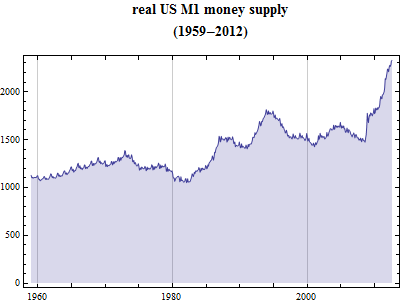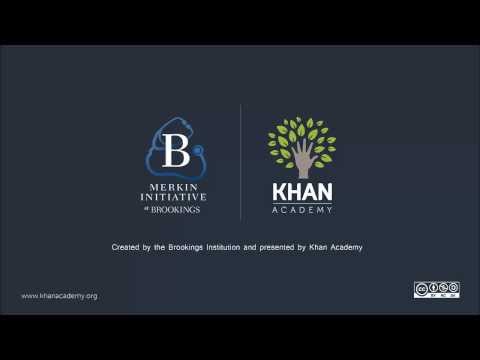What Is Fixed Asset Types, Formula & Calculation Methods!
Contents:


They are “fixed” because they are essential to operations, and therefore will not be sold or depleted within the current accounting year. That means a fixed asset is not a current asset, as current assets can be liquidated within an accounting year in order to generate cash. It’s time to get serious about managing your real estate fixed assets. The process can be complex and time consuming, and most organizations are either spending too much money to manage their assets or taking on too much risk by relying on spreadsheets. MRI Fixed Asset Accounting automates manual processes and keeps your real estate business compliant with accounting, tax, and financial reporting requirements. All Sarbanes-Oxley compliant organizations in North America must provide a complete audit trail of the asset lifecycle and show full transparency of fixed asset transactions.
Ensure consistent regulatory and tax compliance by automating non-trade transactions and invoices while enforcing trading relationships and policies, as well as required taxes and transfer pricing. Automatically process and analyze critical information such as sales and payment performance data, customer payment trends, and DSO to better manage risk and develop strategies to improve operational performance. Perform pre-consolidation, group-level analysis in real-time with efficient, end-to-end transparency and traceability.
Fixed assets most commonly appear on the balance sheet as property, plant, and equipment (PP&E). Asset tracking software is often used to track both the information about an asset for financial reporting purposes as well as the physical location of an asset. The financial reporting elements of tracking often relate to accounting procedures and valuation needs but may or may not relate to location information. Tracking assets is an important concern of every company, regardless of size. Fixed assets are defined as any ‘permanent’ object that a business uses internally including but not limited to computers, tools, software, or office equipment.

Tools used in the business may be fixed assets depending on their financial basis and the value threshold of the company. For example, you would expense a $12 hammer, but a $1,500 insulated tool set or high-end drill bit set may be a fixed asset. These fixed assets are any additions and upgrades you make to leased assets or rental property.
Fixed assets – What are fixed assets?
Fair value is the price for which the leased property could be sold between unrelated parties in an arm’s length transaction. Buildings – Buildings are structures erected to stand more or less permanently, and are designed for human use and occupancy or as shelter for animals or goods. Each structure is comprised of such components as framing, interior finish, roof structure and cover, and building service systems which are all included in the asset cost.
Accelerate dispute resolution with automated workflows and maintain customer relationships with operational reporting. Unlock full control and visibility of disputes and provide better insight into how they impact KPIs, such as DSO and aged debt provisions. Improve the prioritization of customer calls, reduce days sales outstanding, and watch productivity rise with more dynamic, accurate, and smarter collection management processes.
Establish a Threshold for Capitalization
They are also called property, plant, and equipment, as those are the most common categories such assets fall into and how you list them on the balance sheets. A Current asset is a money or any other resource that will swing to cash within a year from the date it was included in the organisation’s bookkeeping record. If an organisation has a working cycle that is larger than one year, a resource that will turn to cash inside the length of its operation cycle is considered to be a current asset. Goodwill is an elusive resource, and this kind of asset is simpler to calculate by finding the difference between organisations actual cost and cost at which it is sold or purchased for. Common depreciation methods include the straight line method, double-declining balance, sum-of-the-years digits, and units of production method. Expense costs such as sales tax or freight incurred on a fixed asset purchase.
This process involves estimating an asset’s life and any salvage value. For example, a computer server may have a life of five years and no salvage value. Yearly depreciation expense would be the cost of the asset divided by its life time. These issues are part of the day-to-day responsibilities of an asset accountant.
- Leasehold Improvements – capitalizable improvements and extraordinary repairs made to fixed assets recorded as operating leases .
- The second thing here is that the rest of the five tracks are rented and are not purchased; hence, they will not be recorded as fixed assets.
- You can use depreciation to deduct certain costs yearly instead of all at once, providing some tax benefits and helping you keep your books in order.
- This intersection between CFO and CIO priorities is driving more unity in terms of strategy and execution.
- For instance, if a new car is bought, it would fetch generally lower than the purchase price immediately once it moves outside the car showroom.
The purchase of fixed assets represents a cash outflow to the company while a sale is a cash inflow . If the asset’s value falls below its net book value, the asset is subject to an impairment write-down. This means that its recorded value on the balance sheet is adjusted downward to reflect that it is overvalued compared to the market value. As from this year all but the smallest companies are required to include lists of fixed assets in their current cost accounting. Whatever method used, the recording and processing of fixed assets registers is a complex matter in which the accountant is almost inevitably dependent upon the computer.
Stop RunningYour BusinessLike This!
Depreciation shows up on the income statement and reduces the company’s net income. Asset impairment is akin to an advanced depreciation, which is when you reduce the potential benefit from an asset. When fixed assets undergo a significant change in circumstance that may reduce their gross future cash flow to an amount below their carrying value, apply an impairment test. An asset is any resource that you own or manage with the expectation that it will yield continuing benefits or cash flows. An asset is also a resource the value of which you can dependably measure. Entities record their purchase of a fixed asset on the balance sheet, Asset purchases used to be noted on a sources and uses of funds statement, which is now called a cash flow statement.
Cash Flow From OperationsCash flow from Operations is the first of the three parts of the cash flow statement that shows the cash inflows and outflows from core operating business in an accounting year. Operating Activities includes cash received from Sales, cash expenses paid for direct costs as well as payment is done for funding working capital. Net fixed assets are used by small business owners to figure out how much their total fixed assets are really worth or how much liability they have. Net fixed assets are your total fixed assets minus any depreciation on your fixed assets and any liabilities, according to Accounting Tools. Simply put, this means that you need to account for any decrease in value of your fixed asset.

Depending on the value of the asset, a company may need to record gain or loss for the reporting period during which the asset is disposed. These types of entries reflect the current fair market value of a fixed asset. You’ll need to make a series of accounting changes to determine if there is a gain or loss from revaluation.
Fixed Asset General Accounting Procedures
Value estimates may not be consistent, and they can and should be adjusted throughout the life of an asset. Depreciation by units of production writes off an asset according to how much that asset produces. This method writes off more of the cost in the early years and less in the later years.
With the exception of https://1investing.in/, fixed assets are depreciated to reflect the wear and tear of using the fixed asset. When recording a fixed asset, include all expenditures to acquire, ship and install the asset. “For your business, the key is understanding the distinction between the capitalizable costs and those that should be immediately expensed. But broadly, if the cost you’re incurring is material and it is necessary to extend an asset’s useful life beyond one year, then that is a cost that should be capitalized,” advises Adams. Gain on disposal is calculated by subtracting the accumulated depreciation from the original cost of an asset and then adding the sales amount. In this example, the asset was purchased for $100,000, and accumulated depreciation is $80,000.
For practical purposes, you may treat individual items in an asset category as one asset. To be considered one fixed asset, items must share an asset group, acquisition date and an acquisition cost. MRI Fixed Asset Accounting software keeps your business in compliance with accounting, tax, and financial reporting requirements. Identify opportunities to apply fixed-asset changes that can help provide immediate tax savings through accelerated tax methods for depreciation, repair and maintenance expenses, and other items. This section will introduce you to how the State of Maine uses Advantage to run the Fixed Assets process.
Top 10 Best FinTech Companies In USA In 2023 – Inventiva
Top 10 Best FinTech Companies In USA In 2023.
Posted: Fri, 14 Apr 2023 18:06:34 GMT [source]
However, in times of financial difficulty, PP&E can be used as collateral for a business loan. PP&E depreciates over the course of its lifespan, with the exception of land, which is expected to appreciate and should be reported at its most up-to-date market value. For example, a company that purchases a printer for $1,000 with a useful life of 10 years and a $0 residual value would record a depreciation of $100 on its income statement annually. Companies that more efficiently use their fixed assets enjoy a competitive advantage over their competitors.
- Depending on the value of the asset, a company may need to record gain or loss for the reporting period during which the asset is disposed.
- In this example, the asset was purchased for $100,000, and accumulated depreciation is $80,000.
- It is recorded as an expense since it diminished the value of a company’s total holdings.
- The asset is one unit and gains the accumulated depreciation of $83.33, and the net value is $416.67.
- Accounting for fixed assets can be a bit complicated and there are a number of other fixed asset transactions that may call for journal entries.
You present value of an annuity table for disposal in the following ways, based on whether there was a gain on the sale or not. For a more detailed explanation of depreciation and the calculation of various helpful methods, consult our equipment depreciation article. If you have an asset worth $5,000 that you can sell for $500 after five years of useful life, you will realize that you have to depreciate $4,500 over five years.
Asset Relifing Benefits for Your Hospital – EisnerAmper
Asset Relifing Benefits for Your Hospital.
Posted: Mon, 13 Mar 2023 19:25:47 GMT [source]
Fixed assets are physical or tangible items that a company owns and uses in its business operations to provide services and goods to its customers and help drive income. These assets, which are often equipment or property, provide the owner long-term financial benefits. It is expected that a business will keep and use fixed assets for a minimum of one year. The value of fixed assets decline as they are used and age , so they can be depreciated. At the end of their lifecycle, fixed assets are often converted into cash.
Emma’s 70-person geographically distributed accounting team improved internal controls and streamlined the audit thanks to FloQast. Depreciation can be calculated using the straight-line method, which subtracts an equal amount each year over the life of the asset. Global and regional advisory and consulting firms bring deep finance domain expertise, process transformation leadership, and shared passion for customer value creation to our joint customers. Our consulting partners help guide large enterprise and midsize organizations undergoing digital transformation by maximizing and accelerating value from BlackLine’s solutions. If you recently attended webinar you loved, find it here and share the link with your colleagues.
